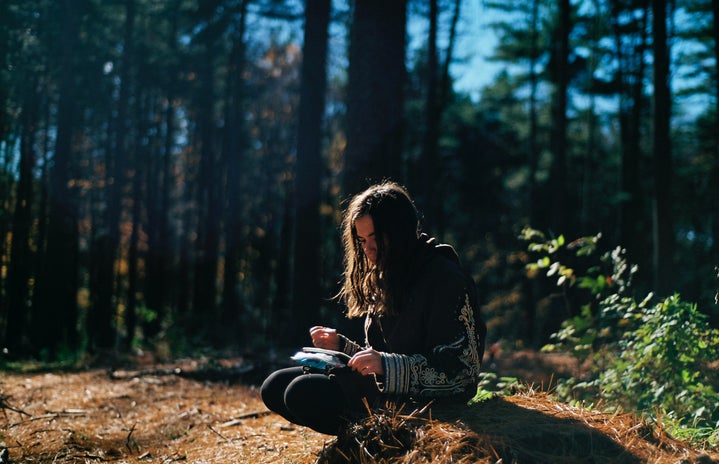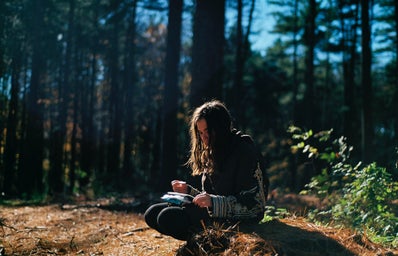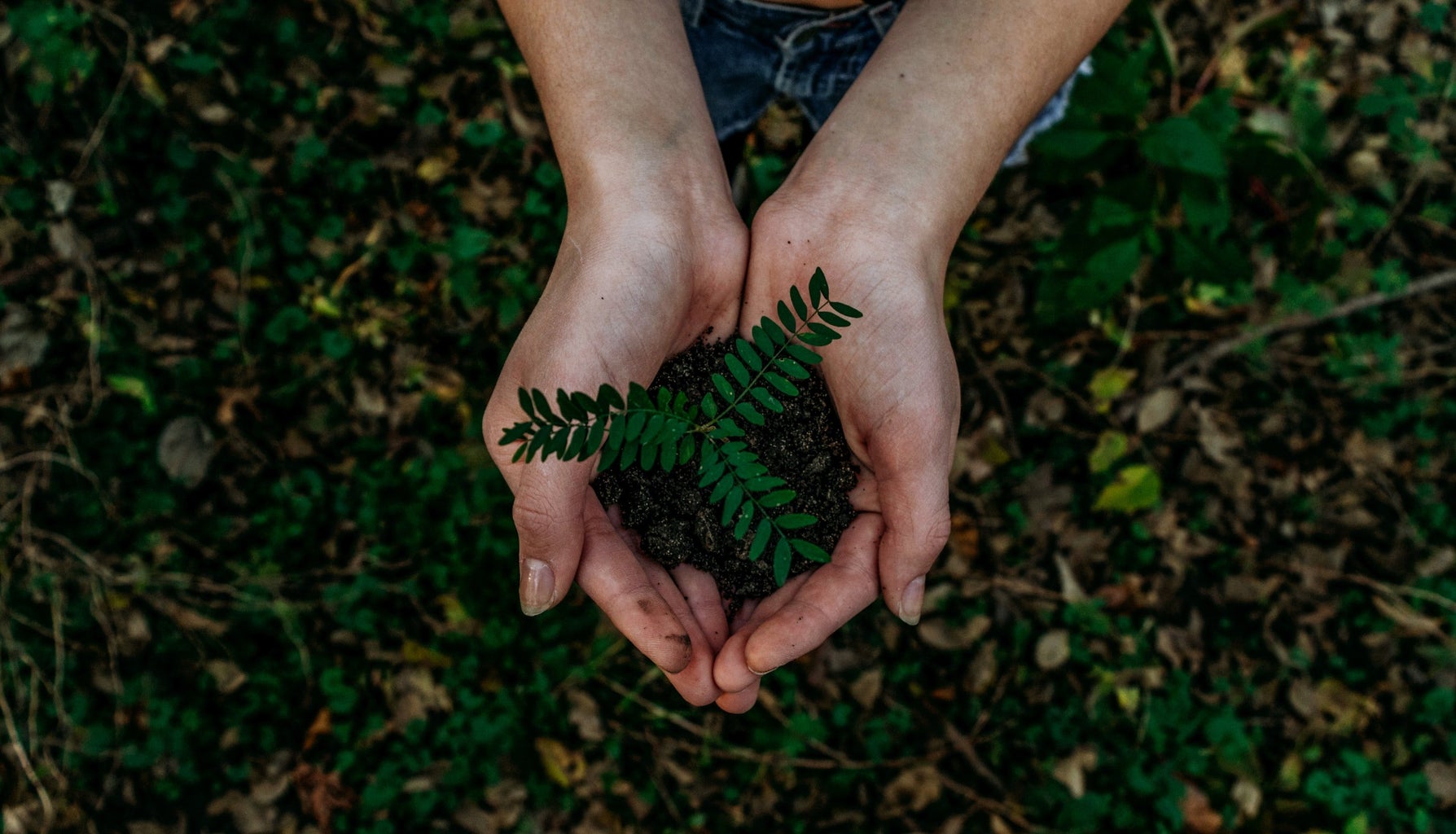The Her Campus National Editors write about products we love and think you’ll love too. Her Campus has affiliate partnerships, so we get a share of the revenue from your purchase. All products are in stock and all prices are accurate as of publication.
In a world where convenience and the fast pace of daily life consumes us, connection with nature is often overshadowed. Foraging stands as a reminder of our primal relationship with the land. It’s a practice deeply rooted in human history, where our ancestors relied on their knowledge of the wild to gather resources for survival. Today, foraging resurges, not just as a means of sustenance, but as a way to reconnect with the natural world and rediscover forgotten flavors and remedies.
But what is foraging? It’s the act of scavenging, identifying and collecting resources from the wild, that can include a variety of activities such as picking berries, nuts, fruits or edible plants or even gathering mushrooms and wild herbs. These supplies can later be used to eat, to season food or even for medicinal purposes.
How to start safely
Before entering the wilderness and scavenging for edible supplies, it’s crucial that the forager gathers a fair amount of knowledge about the local flora. A lot of wild plants and mushrooms can be delicious and nutritious, but some of them can have poisonous look-alikes.
An important step to start foraging is the identification of what you’re going to forage, where to find it and how to tell different species apart, for that, a great start is guide books specific to your area. Don’t eat what you find right away, start just taking your time and comparing your sample, to your book’s illustration or picture. Plants with flowers are a suggested beginning since they are easier to tell apart, once you are certain that you know that species, only then you can start consuming them.
Some book recommendation for new foragers
- Foraging Pocket Guide – by Marlow Renton and Eric Biggane
- Wild Mushrooming: A Guide for Foragers – by Tom May
- Foraging for Survival: Edible Wild Plants of North America – by Mykel Hawke
- Nature’s Garden: A Guide to Identifying, Harvesting and Preparing Edible Wild Plants -by Samuel Thayer
Foraging is less dangerous then it appears to be, a lot of the fears surrounding it, stems from our western perception, that’s been completely overtaken by it’s commodity. But fear is an important emotion to protect ourselves from some possible dangers, so the Youtuber and forager, Insteading recommends listening to your body, if you feel any of these symptoms: uncontrolled salivation, burning sensation in the throat, unpalatable bitterness, nausea. You should just spit it out, then later take some photos or samples to research the cause of it. If the cause is mismatching, contact naturalists at your local department of conservation, they will most likely be able to help you identify which species it was, and how to take the right precautions.
Where to Harvest
Responsible foraging emphasizes sustainability and ethical harvesting practices. So the most common places to harvest are in your own property, parks and local woods. Some parks have regulations regarding natural resources, so it’s important to do your own research about the rules of the place you choose to gather your crops. If needed, ask for permission or get a permit.
Foragers follow the principle “leave no trace”, ensuring minimal impact on the ecosystem. They harvest only what they need, avoiding overexploitation of wild resources. So when you pick your spot, you should consider the local flora, endangered and parasitic species.
Besides where to harvest, an important information to have is where not to. Manicured public places; such as public squares, museums and campuses, to keep the appearance of the place a lot of toxic pesticides are used, and make the condition of the plants less than ideal for consuming. Roadsides, vehicles liberate a bunch of toxins and lead in the air, so the plants alongside the road get affected by them. Industrial sites with contaminated soil, plants stem from the ground so, when there’s something toxic in the soil, that will affect the plants natural development and make them improper to ingest.
Are Apps a safe mechanism to identify plants?
There are a few apps available to identify plants, such as Pl@ntNet, Seek and even Google Lens, but are they completely safe to use when deciding which plants to consume? The simple answer is, no. Trusting your life on an app can be quite dangerous, yes they can identify some plants, but it’s never 100% accurate. Knowing about what you’re about to harvest is the most important part in foraging, so while apps can be fun, they are not recommended as the only resource.
Connecting with our heritage
This practice is not just about sustenance or culinary exploration; it’s a way to forge a deeper connection with nature and practices that were lost due to capitalism and the implantation of laws restricting land for harvesters. Alexis Nikole, a creator on TikTok, also known as “Blackforager” says in a Emmy Winning short documentary by AJ+
“Foraging as a black person is an act of rebellion”
Alexis Nikole
In it, she states why she chose the name “Blackforager”: foraging was a common practice among black and indigenous folk in the United States, until slaves were freed and laws regarding it were placed to financially bind them to the plantations they just escaped. In the modern age, foraging became a majorly white space, so using her platform, Alexis inspires a lot of viewers to get into this practice, especially people of color.
In a world consumed by overpriced, overprocessed, chemically altered food, foraging stands against that, connecting us back to natural resources. When done safely, with knowledge and respect it can increase your quality of life, not only by increasing your options of foods, but also by saving money and serving as a new hobby that will make you go out on hikes, meet new places, and maybe even meet new people. Give foraging a try, and start cataloging your local vegetation!
———————————————
The article above was edited by Fernanda Miki Tsukase.
Liked this type of content? Check Her Campus Cásper Líbero home page for more!



